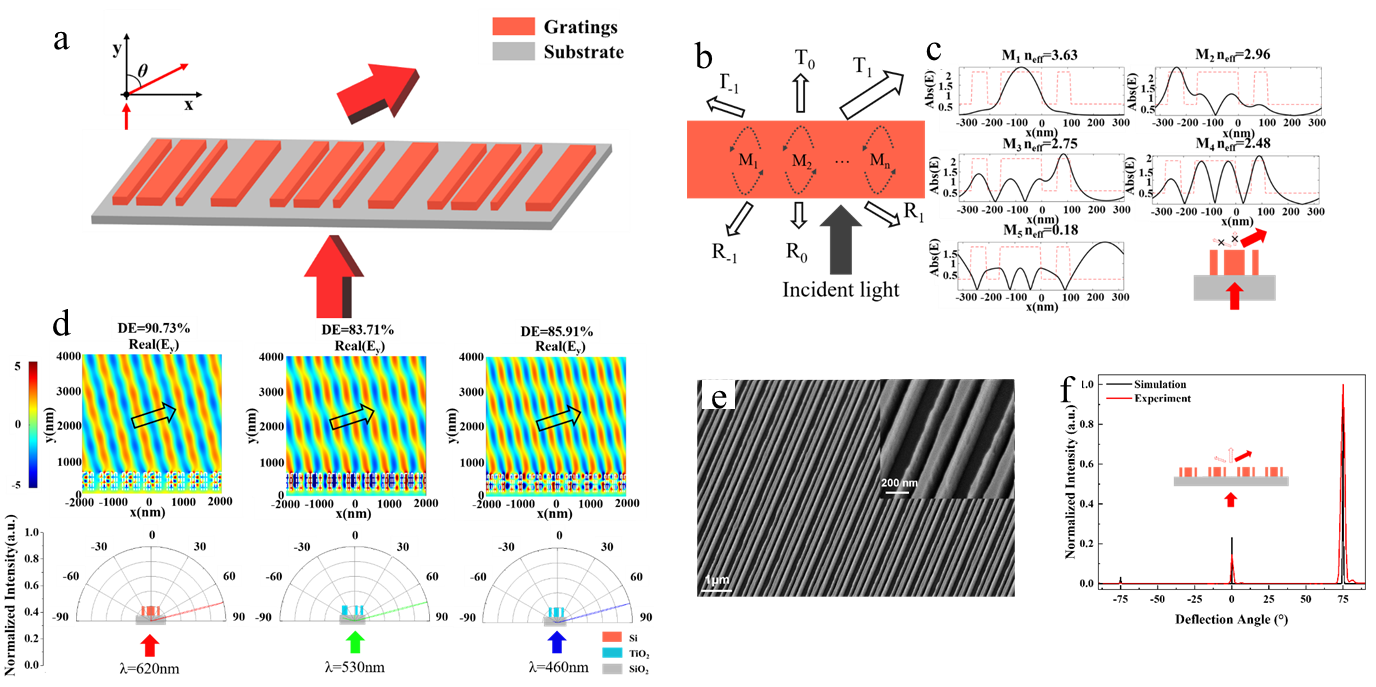In February 2022, Wu Dan, assistant professor of our institute, published the latest research results at Optics Express under the title of "Realization of Inversely Designed Metagrating for Highly Efficient Large Angle Beam deflection". Optics Express is an established classic journal sponsored by the Optical Society of America (OSA) that publishes important research in the field of optics with a 2020 impact factor of 3.894 (JCRQ1, RANK28/192). Assistant Professor U Dan is the co-first author of the article.
Three-dimensional display can reproduce all the information of three-dimensional objects, in its various technical routes, holographic display can achieve true three-dimensional display, that is, restore all the original information of the object, but limited by the display processing data too much, temporarily can not get large-scale application. Multi-perspective three-dimensional display By processing a limited number of viewing angle display information, it is possible to achieve a three-dimensional display effect close to holographic display, which is considered to be one of the ways to achieve three-dimensional display. However, multi-view 3D displays have limited viewing angles and crosstalk problems between different channels. Inefficient directivity light sources, especially at large angles, are the source of these problems. Traditional directional light sources can be obtained through geometric optics or micro-nano optical regulation but cannot effectively regulate light.
In this paper, we propose a way to reverse design the supergrating, which can achieve high efficiency, large angle, and suitable for multi-wavelength incident supergrating, and its simulation and experimental results confirm its ability to regulate the beam when deflecting at large angles. This reverse design method realizes the regulation of the full phase of the emitting light during the super-grating period, and the phase-up interference of the Bloch mode in the specified diffraction series can be realized, thereby ensuring the high efficiency of the light output at the specified angle. In the specified deflection range of 30°to 80°, its beam deflection efficiency can reach 82.02%-98.68%. The Si-based high-efficiency beam deflection supergrating obtained by the experiment further proves the practicality of this design method. In addition, this reverse design method is also effective for incident light of multiple wavelengths, including red light (620 nm), green light (530 nm), blue light (460 nm), and is promising for future three-dimensional displays.
Full-text links:https://opg.optica.org/oe/fulltext.cfm?uri=oe-30-5-7566&id=469626

Fig. Schematic diagram of supergrating, Bloch mode control, multi-wavelength incident deflection, SEM image of supergrating, and experimental deflection results.